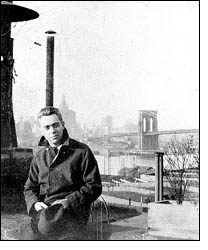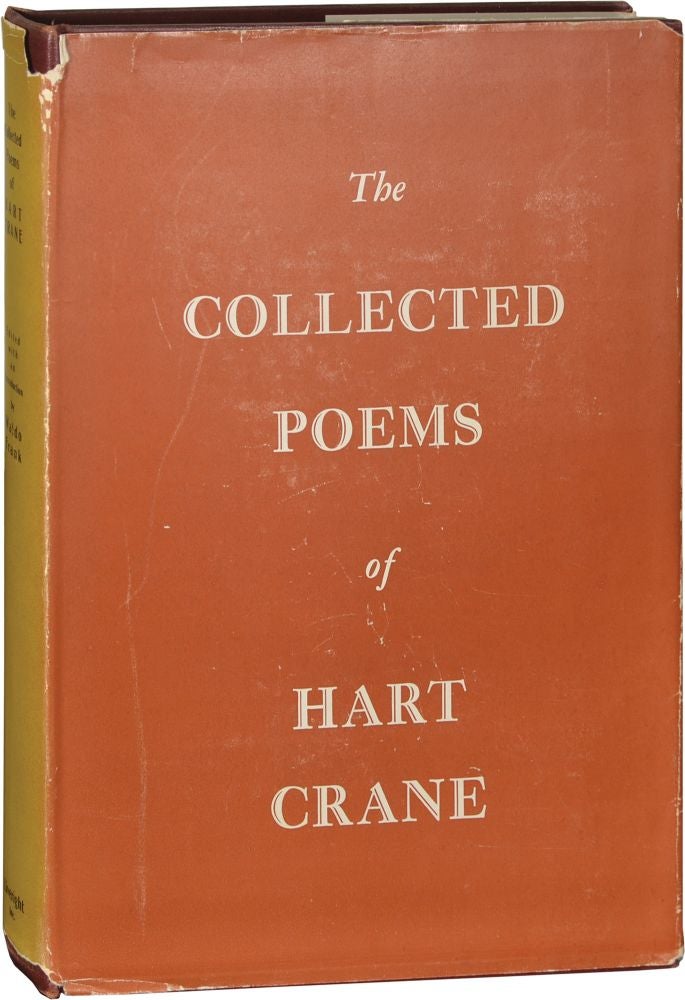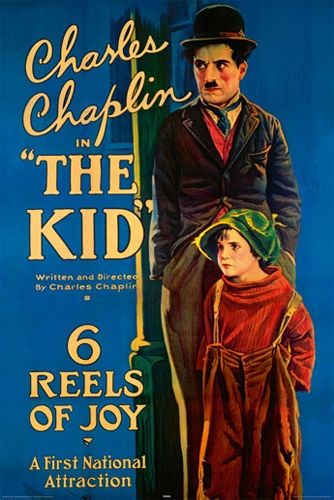 |
| Hart Crane |
Born to a wealthy family in Ohio in 1899, Crane eschewed higher education to pursue what he believed was his destiny to be a poet. He moved to New York City and had his work published in small magazines. His exuberance and good looks, along with his writing, soon established him as an up and coming figure on the literary scene.
Crane was twenty-two years old, temporarily living back in Ohio and employed dropping handbills at doorsteps when he wrote "Chaplinesque" in October 1921. He was inspired to write the poem after seeing The Kid, comedian Charlie Chaplin's first full length film, in which Chaplin's Little Tramp character befriends an abandoned child. In a letter to a friend, Crane wrote -- "Comedy, I may say, has never reached a higher level in this country before. We have (I cannot be too sure of this for my own satisfaction) in Chaplin a dramatic genius that truly approaches the fabulous sort. I could write pages on the overtones and brilliant subtleties of this picture...My poem is a sympathetic attempt to put into words some of the Chaplin pantomime, so beautiful, and so full of eloquence, and so modern."
Crane was not alone in his admiration for Chaplin. In the early 1920s, film was beginning to be accepted as an art form and Chaplin, the movie world's biggest star, was widely recognized as a master of this new manner of creating works of art. Reviewing The Kid for The New Republic, critic Francis Hackett wrote "[Chaplin's] wisdom, his sincerity, his integrity, all exhibited in this film, should go some way to revolutionize motion-picture production in this country. From an industry The Kid raises [film] production to an art."
In a letter to a friend who did not understand "Chaplinesque" Crane explained -- "I am moved to put Chaplin with the poets (of today)...he, especially in The Kid made me feel myself, as a poet, as being 'in the same boat with' him. Poetry, the human feelings [are] so crowded out of the humdrum, rushing, mechanical scramble of today that the man who would preserve them must duck and camouflage for dear life to keep them or keep himself from annihilation. I have since learned that I am by no means alone in seeing these things in the buffooneries of the tragedian, Chaplin...and in the poem I have tried to express these 'social sympathies' in words corresponding somewhat to the antics of the actor."
 |
| First collection of Crane's poems, 1926. |
Two years after writing "Chaplinesque" Crane met Charlie Chaplin. In the autumn of 1923, the novelist and critic Waldo Frank, a mutual friend, unexpectedly brought Chaplin to Crane's Greenwich Village apartment. Crane wrote of the experience to his mother -- "I had just got my pajamas on last night when there was a rap on the door. I opened and in walked Waldo Frank -- behind him came a most pleasant-looking, twinkling, little man in a black derby...I was quickly urged out of my nightclothes and the three of us walked arm in arm over to where Waldo is staying...All the way we were trailed by enthusiastic youngsters. People seem to spot Charlie in the darkness."
 |
| Charlie Chaplin, c. 1920 |
Published in 1930, "The Bridge" was Crane's reply to T.S. Eliot's "The Waste Land." Crane admired "The Waste Land" but, excited by new developments such as motion pictures, he rejected the bleak view of the twentieth century that Eliot put forth. "Like Emerson and Whitman, [Crane] is certain that every great poet represents a new beginning...In a period obsessed with its belatedness, Crane simply refused to accept that the modern world was diminished or disenchanted, and his poetry, at its best, uses language strangely and vitally enough to vindicate its claim to ecstasy," wrote Adam Kirsch in The New Yorker.
 |
| Collected Poems, first edition, 1933. |
Crane is considered a major figure in modern American poetry but his relatively small body of work and its uneven quality sometimes call into question his place in the canon.
To read "Chaplinesque" click here
To hear "Chaplinesque" and listen to a brief discussion of the poem click here
Here's more information --
The Poetry Foundation.
Ohioana Authors (WOSU and the Ohioana Library).
Poets.org (The Academy of American Poets).
Fisher, Clive. Hart Crane: A Life, 2002.
Hammer, Langdon (ed.). Hart Crane: Complete Poems and Selected Letters, 2006.
Mariani, Paul. The Broken Tower: A Life of Hart Crane, 1999.
Schickel, Richard (ed.). The Essential Chaplin, 2006.
Unterecker, John. Voyager: A Life of Hart Crane, 1969.
The Committee Room. Time Spent with TCR is Never Wasted.


Thanks for sharing this information and this is really useful to me. Keep updating this information.
ReplyDeleteBest Industrial Training in Noida
Best Industrial Training in Noida
That's was a great article,
ReplyDeleteRouterlogin
Routerlogin Net
thats a really awesome post thanks for share agen togel terpercaya
ReplyDeleteThe pest and pecan insects are very wonderful and can be a science lesson suitable for your children or satisfy your curiosity. Check these facts while dealing with the expulsion of your family members.
ReplyDeleteشركة مكافحة النمل الابيض بخميس مشيط
شركة مكافحة حشرات بخميس مشيط
شركة رش مبيدات بخميس مشيط
ارخص شركة مكافحة حشرات
Good evening! Our paper writing services are able to cover such a large area as we have a large team of writers that we can call on. All writers have proven experience that’s why remarks and writing that we provide are completely original and free of plagiarism.
ReplyDeleteWelcome to https://expertpaperwriter.com/grademiners-com-review/ – your number one essay writing company online. Can you write my essay cheap and fast? Absolutely! We’ll also do your composition from scratch to ensure the maximum level of quality. Need someone with the skills and experience to help with your essay? Reach out to our company – Essay Writer LLC. We’ll get the job done very well!
ReplyDelete